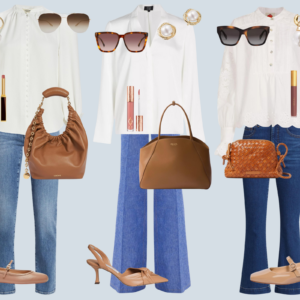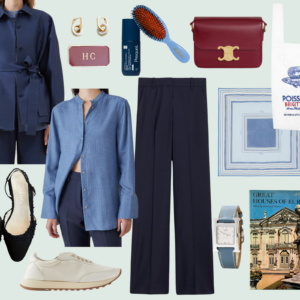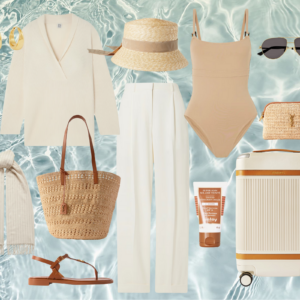Table Setting Etiquette and Dining Manners
by habituallychic
10 . 26 . 22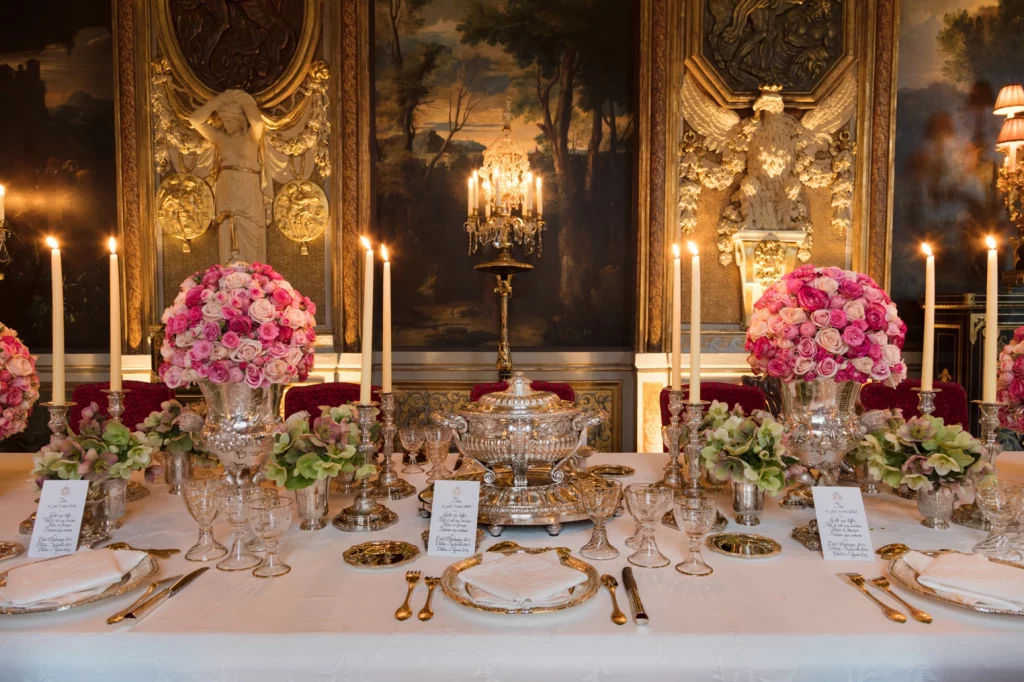
The foreword of Tiffany’s Table Manners for Teenagers by Walter Hoving says the following.
“Good manners are as important as good grooming and good behavior. Unfortunately, however, in this day of confused standards, manners are sometimes sadly neglected. This is especially true of table manners.
At Tiffany’s our interest in attractive tables set with good china, glass, and silverware makes us equally aware of the importance of good table manners.
But manners must not be stilted, self-conscious, or artificial. Therefore, it is dangerous to have one system or no system, for home consumption and another for dining out. This is apt to cause dinner-table insecurity later in life.
So, in training in table manners must be started early enough to make them automatic. Consequently, we submit herewith our version of good table manners. There are other systems, and we don’t quarrel with them, but we think this system is attractive, graceful, and above all, natural.”
This was written in 1961 and yet it feels just as relevant 61 years later.
I posted about table settings and manners on Sunday in my Instagram Stories and a few people asked if I’d turn them into a blog post so they could have them as a reference. All of these rules have been ingrained in me so I don’t use any of the mnemonic devices for setting a table but I’ll try to include the ones that might help you remember some of the rules.
As I wrote in my Stories, I’m sure some people are saying to themselves, “who cares about place settings” but they are the guide to which flatware you use and for which course. If you get them wrong, your guests will be confused. In our every increasing casual world, knowing how to do these things and have good table manners can set you apart, especially in work settings. Some companies take job candidates to lunch and dinner as a test to see how they might behave in front of clients. I had this confirmed by many followers too.
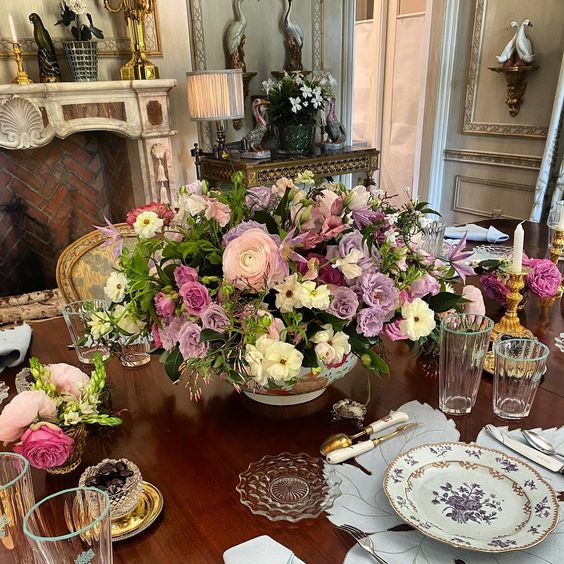
Before we even get to table settings and manners, let’s start with planning a dinner party or Thanksgiving dinner. You should first decide how much room you have so you can figure out how many guests you can invite. There are certain times of year in different cities that are full of events so you may want to plan your dinner party for a date when you won’t be competing with other events. Invitations should be sent about four weeks before your dinner party. Once that is out of the way, you can start planning a menu for which you might have to take into consideration food allergies of your guests.
To clarify, food allergies are different from food preferences so when you are invited to a meal, don’t inundate your host with a CVS receipt long list of foods you won’t eat.
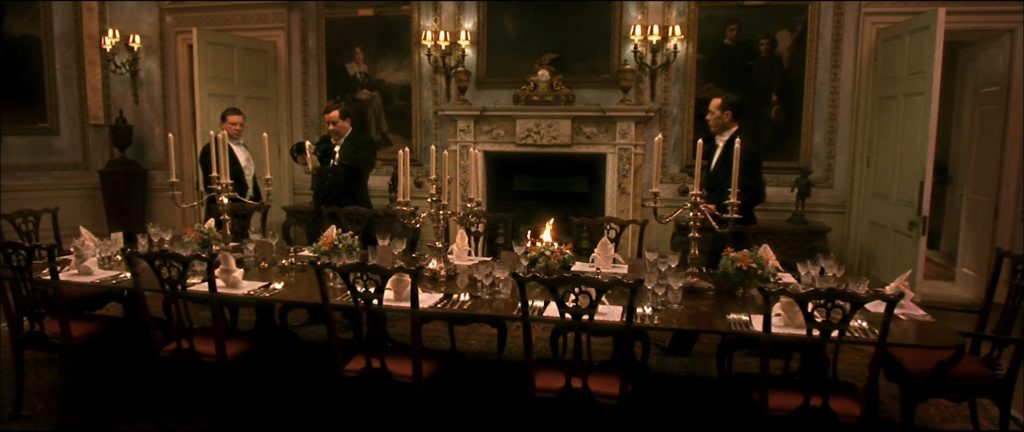
One of my favorite films for table setting inspiration is Gosford Park. You get to see how much work goes into a shooting party weekend at an English country estate in 1932. This time period was still the height of the aristocracy and their households full of servants that would cease to be after World War II. One scene shows the butler checking on laying of the dinner table by the footmen. One even has a ruler to make sure each place setting is the same distance apart and the same distance from the edge of the table.
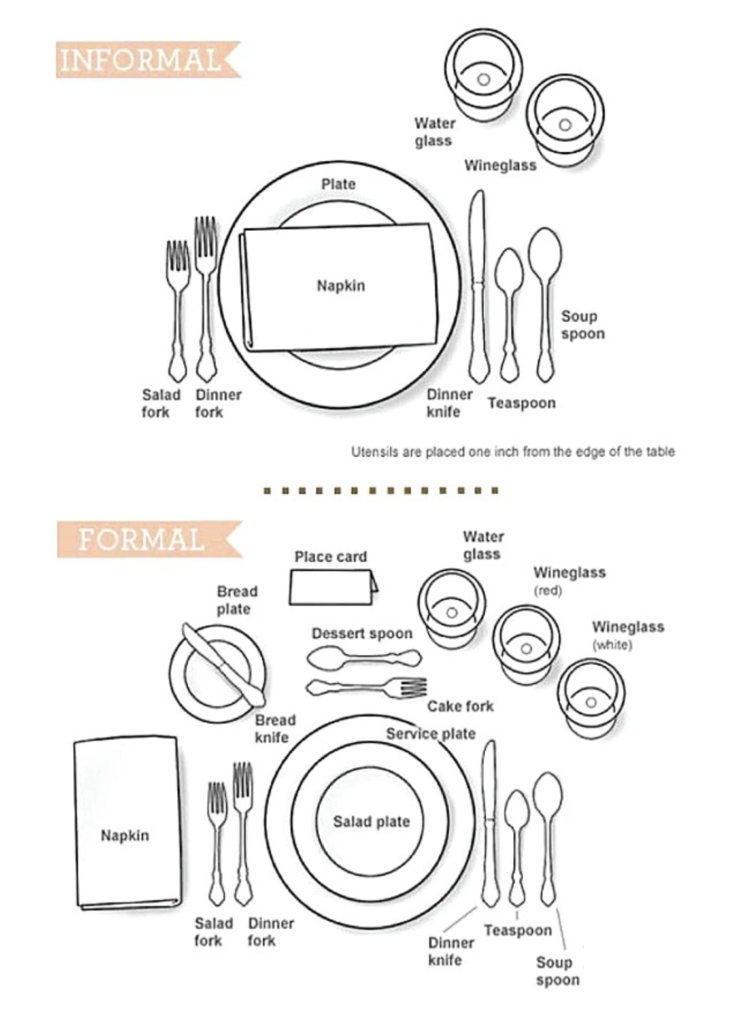
These are examples of informal and formal place settings. Some people couldn’t figure out why the teaspoon was between the knife and the soup spoon. I think they are just showing where each would go depending on what you are serving for dinner. It could also be for a palette cleanser sorbet brought out before the main course.
Just in case anyone doesn’t know, you always start from the outside and work your way in for the flatware. In restaurants, they might bring new silverware out before each course.
Once you know the rules, you can break them. The bread plate can go in different locations on the left or even above the place setting sometimes and the glasses aren’t always placed in the same configuration but the one place where you have to set the table correctly is the flatware. This is how your guests know which utensil is used for which course. If you get this wrong, they will be confused.
There is one “influencer” in England who always places the flatware incorrectly. I know people who have messaged to tell her and she says she doesn’t care. This is why I get frustrated because then someone who considers this person an expert thinks that is the way to do it and then they start setting their table incorrectly.
There are a lot of videos on YouTube that you can reference for more details. I would reference the Royal Butler: The Correct Way To Lay The Dinner Table.
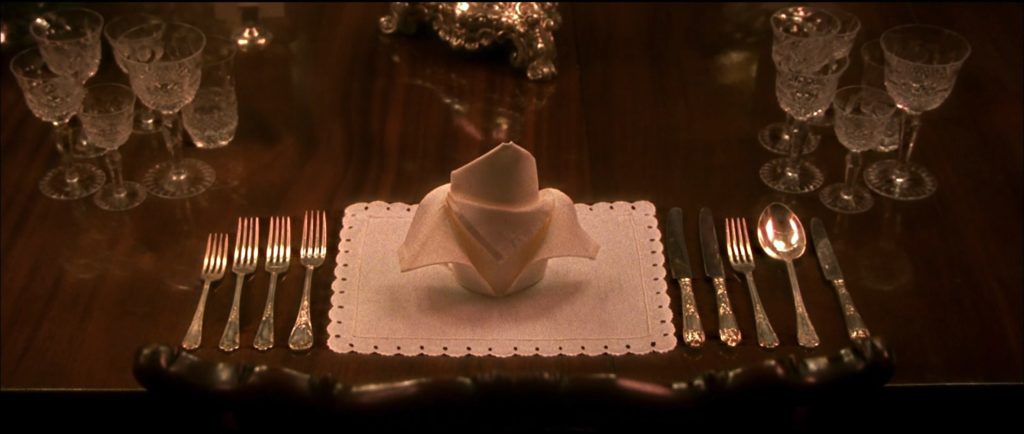
This is a closer look at how the table was set in Gosford park. The fork on the right is because they ate the fish course with two forks instead of a fork and a fish knife. The French might have a small fork inside on the left for a salad course that comes later in the meal.
One thing that I notice every Thanksgiving when people post photos of their set tables is how many people place the knives wrong. The sharp edge of the knife edge must face the plate. I always think it’s a safety issue in case your guest is talking to their neighbor and reaches for the knife without looking they won’t cut themselves. There is also rich history on why the knife blade always faces the plate.
“Early on, before there was such a thing as a table knife, a man used a double edged knife to hunt, kill and portion meat for his family. The same knives used for hunting migrated to the table, and our ancestors used them to spear food and lift the food to the mouth on the edge of the blade. During those warring times, the leader of the household was always apt to be supplanted. How easy would it be for a rival to push a sharp blade into someone’s face while they were using it to eat. It wasn’t long before the double sided knife gave way to a single edged knife for exactly this reason. The placement of the single edge knife on the table with the blade facing inward indicated that the host trusted his dining companions. If during the course of the meal, the host were to turn the sharp edge away from his plate, that would indicate someone at the table was not so trusted and that the host was ready to grab the knife to lash out with the out-turned blade. Today we always place the blade inward. Also, what about those blunt dinner knives? This heralds back to 17th century France when Cardinal Richelieu, who was the arbiter of taste at the French court, was so offended by the practice of dinners picking their teeth at the table with the point of their knives that he had all knives in the French court ground down. He thus made his point, and the rest of the world followed.”
Via Doyle The Table Setting Demystified by Reid Dunavant
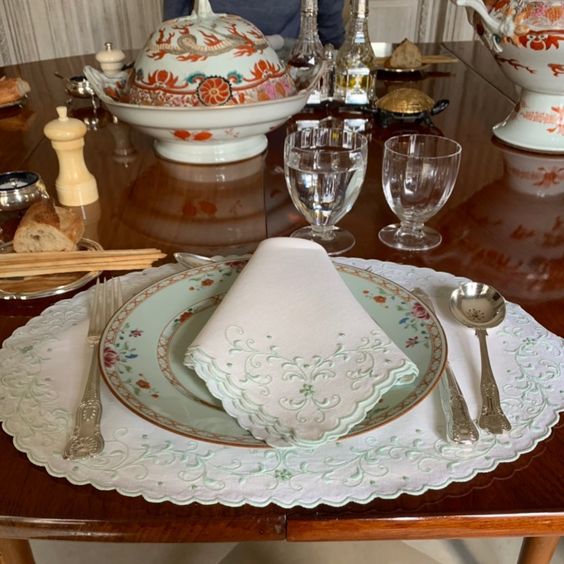
I was once told that some tables are left without a tablecloth because the host wanted to show off how well their servants polished the wood. If you are not using a tablecloth, there should be something to protect the wood from the plates like a placemat or charger. I love the way a gleaming wood table looks with crisp starched white placemats. The English love the fancy folded napkin in the previous photo but most people place a nicely folded ironed and starched napkin to the left of the flatware. it can also go on top of the presentation plate. I was told in Europe that nothing should ever go on top of a napkin except maybe a menu card or placecard.
In America, you often see the forks on top of the napkin. I don’t mind this for lunch or even if sometimes place a fork and a knife together on a napkin for a very casual meal but again, you need to know the rules before you can break them.
That said, I have seen a lot of tables set with a tablecloth and cloth placemats. It’s one or the other but not both.
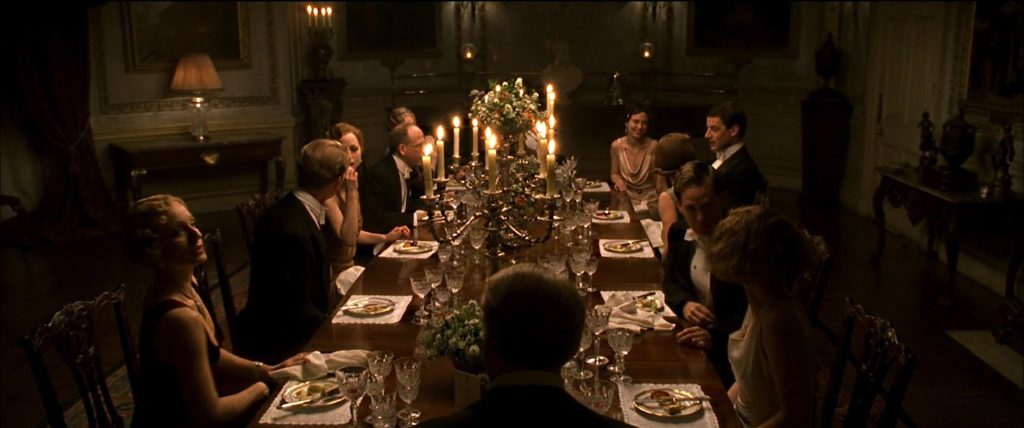
Did you even know there are rules when it comes to candles on a dining table? There is a rule that you should never use candles on a lunch table. I’ve visited Sweden in winter where it got dark at two o’clock in the afternoon so they needed candles so I think this depends on where you live and the weather.
Some people really freak out if they see a table set with brand new candles with white wicks. You are supposed to burn them a little so they don’t look so new before being burned. I assume this might be for candles on a buffet that aren’t being burned during a luncheon because candles on a dining table for a dinner party should be lit about 10-15 minutes before your guests arrive.
Most importantly, you should never use scented candles in a dining room or on a dining table. They interfere with the aroma of the meal.
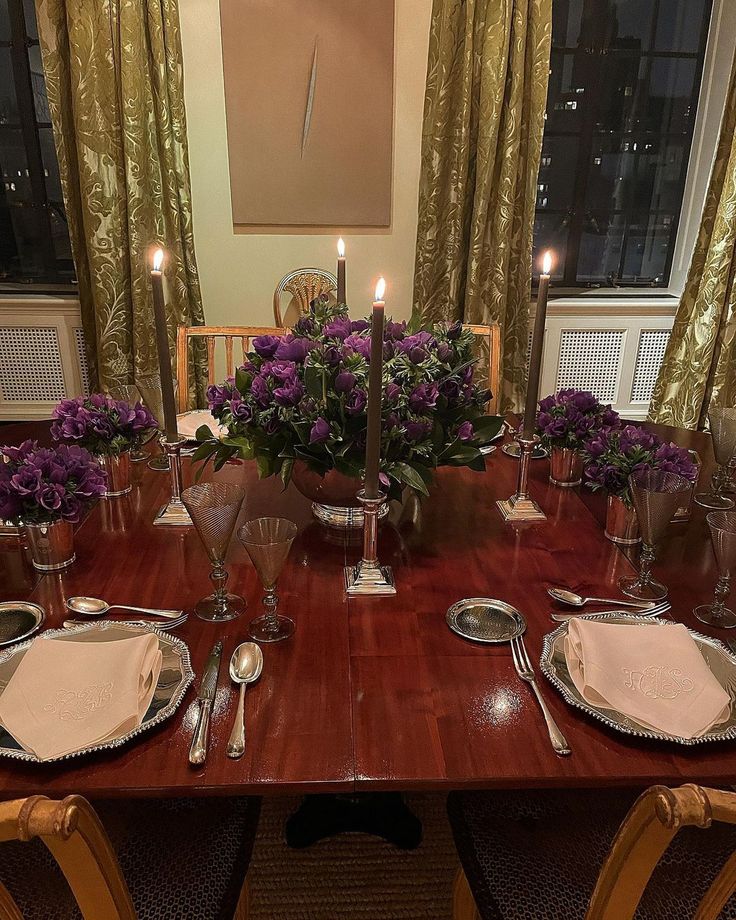
There was a rule that you could only use white or ivory tapers on a table but I think that’s a rule we can loosen up. I love colored candles and think they can be very elegant like these on a table set by Aerin Lauder. I’ve also read that wine glasses should be clear so that you can see the color of the wine but I think a pale colored glass is acceptable. You could always decant the wine so it’s visible to your guests before pouring.
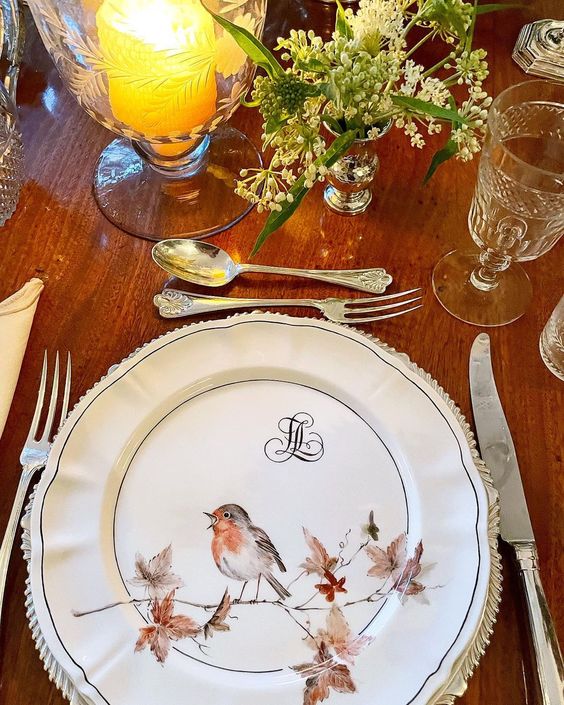
This setting, also from Aerin Lauder, shows the dessert spoon and fork placement above the plate. The spoon always faces to the left and the fork always faces to the right. If you are just serving ice cream, you could leave off the fork. It’s also perfectly acceptable to leave these off the place setting and bring them to the table with the dessert course. If there is a knife placed above the plate, it’s usually for a cheese course.
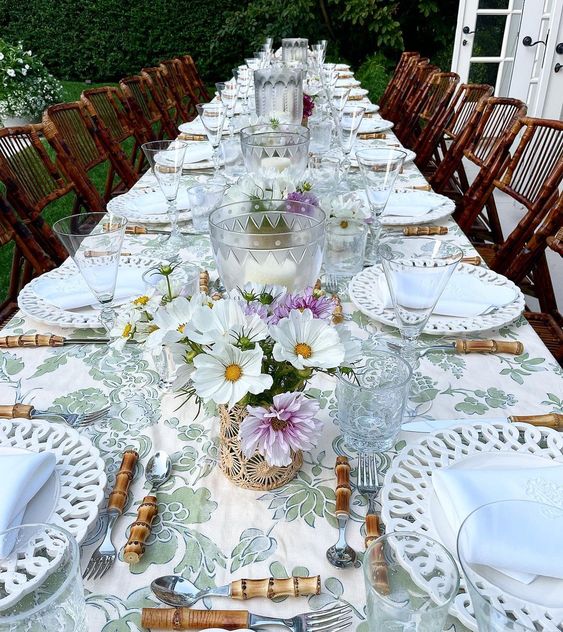
There are also rules about flowers on a dining table. They should be low enough so that your guest can see the person across the table from them for ease of conversation. They should also not be highly scented so they don’t interfere with the aroma of the meal.
At Mr. Chow restaurant in New York, they have a huge display of white lilies in the room. First of all, I hate white lilies to begin with because they are a funeral flower but second, I could barely breathe by the end of the meal because the scent was so strong.
I’m also highly allergic to hyacinths and they do have a very strong scent so I’d leave them out of flowers for the table as well. You could have a more scented arrangement in your entry to welcome your guests but keep things simpler in the dining room.
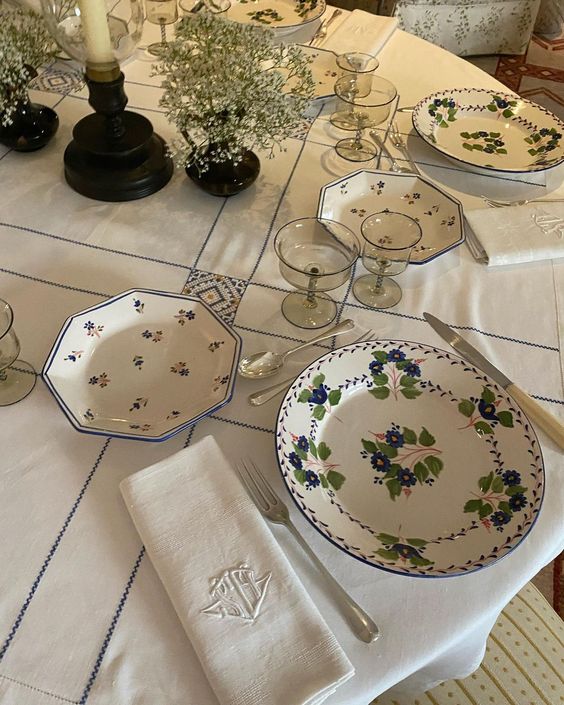
One thing that everyone wanted me to remind you to do is to place your napkin in your lap as soon as you are seated. I have seen recommendations that you should wait for your host or hostess to place their napkin in their lap first but I don’t know that many people still do it that way.
You should subtly unfold the napkin under the table and cover both of your legs with it. I saw an etiquette expert suggest that you fold the napkin in half and place the open ends toward you. When you need to wipe your mouth, you subtly open the edges and dab the corners of your mouth using the inside of the napkin. You do not want to leave stains on a napkin, especially if you are dining in a home with beautiful linens. But your hostess should be gracious enough to know that accidents happen and her guests may spill wine or stain napkins.
I will say there is nothing I find more pretentious than restaurants that have a server take the napkin off the table in a giant flourish and place it in your lap. Better to beat them to the punch and place it in your own lap to prevent that embarrassing spectacle.
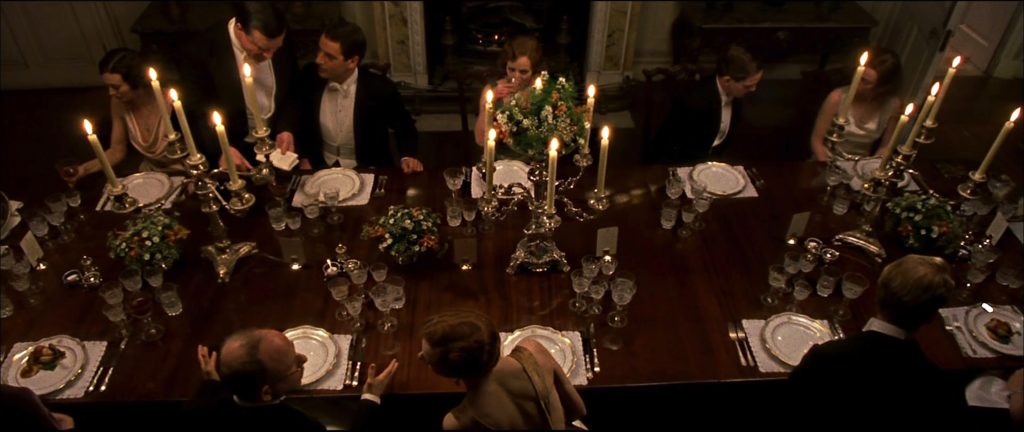
Once you’ve invited your guests, where do you seat them? The guest of honor, if there is one, should be seated to the right of the host or hostess. After that, I like to take time to ponder which guests would get along with others or have things in common. For design dinners, I’ve sat editors next to interior designers whose work I think would be right for a feature in their magazine. I had one editor tell me that I sat her next to the perfect people and felt proud of my hostess skills.
If the evening is more about friends and not business, you could place an extrovert beside someone more quiet so that they can bring them out of their shell and make sure they are part of the conversation.
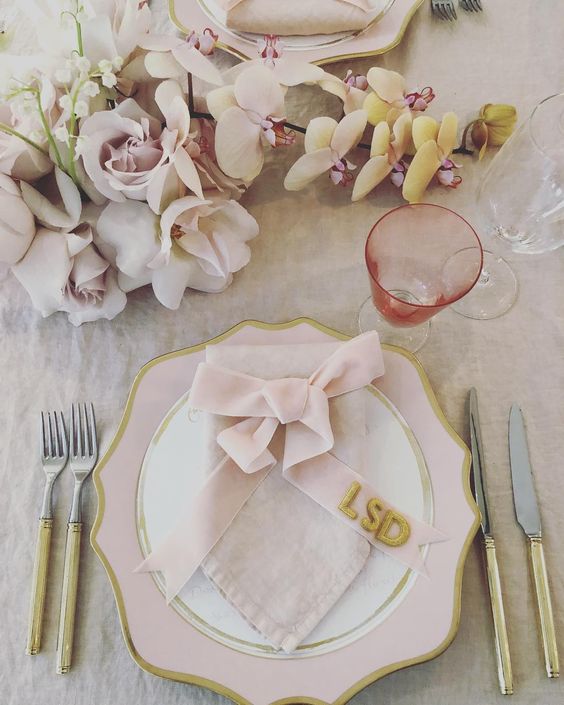
I had someone try to tell me that placecards are for the other guests to know who you are and I almost died. A placecard is so that you know where you are seated at the table.
Under no circumstance should you try to move your placecard so you can sit next to someone you know or want to know. Hosts and hostesses take a lot of time on their seating chart and if you move your placecard, you will most likely not get invited back.
I was at a dinner hosted by a fashion magazine and I’m pretty sure two women moved my placecard so they could sit next to each other. I also watched in horror at a fancy dinner at La Grenouille hosted by a very elegant French jewelry house as one girl made a commotion because she wanted to sit at a different table next to someone she knew. At one point, I told the PR woman that I would switch tables if that would help because I was so mortified that this person was causing so much trouble.
Things happen and sometimes you have to cancel last minute. This will definitely cause some stress for the host or hostess as they might have to move around guests to account for an empty chair or they may have to scramble last minute to fill a void. There is a funny film about just this called Madame where a wealthy American couple prepare a luxurious dinner at their new Parisian house. To avoid an unlucky number of thirteen guests when someone cancels, they ask their loyal maid to masquerade as a wealthy Spanish heiress. A comedy of errors ensues.
As a guest, it’s generally accepted that you do not arrive early or even exactly on time as your host or hostess might still be getting ready. Showing up fifteen minutes after the requested time is preferred. That is if there will be cocktails before dinner. You may want to double check if you think you might be late because of a meeting or traffic.
Another thing, when you receive an invitation, please reply with your response promptly so no one has to hunt you down to find out if you plan to attend.
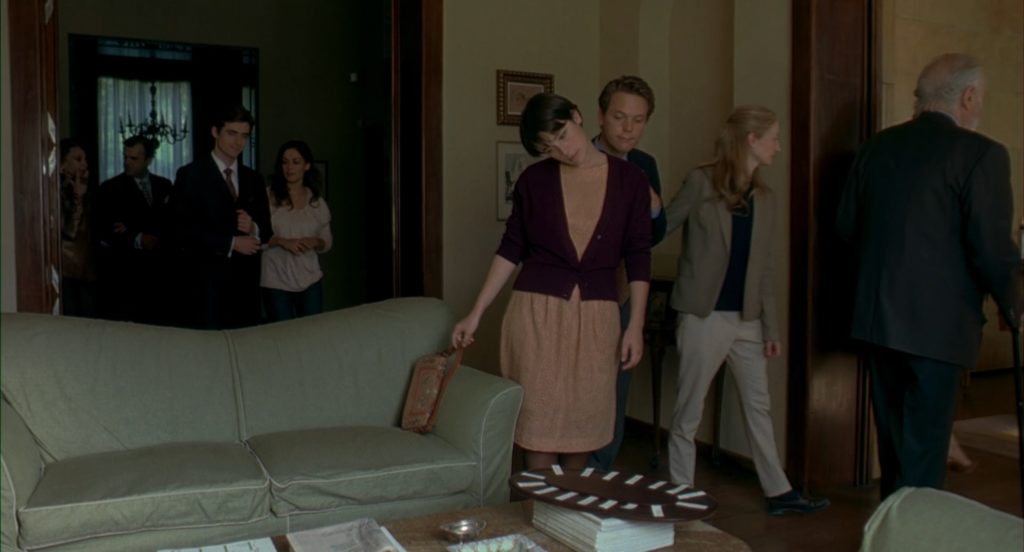
Sometimes placecards are not on the table as you might have seen in the film I Am Love. A table planner is left just outside the dining room so guests can see their place at the table.

So far, I’m sure a lot of the things I’ve talked about seem very formal and off putting but you are certainly allowed to have some fun with your table and it doesn’t have to be so serious. I just think it’s good to be prepared for any type of situation.
A follower shared a story of hearing Olympian Lolo Jones describing her life growing up homeless. She said that she lived in Salvation Army housing and joined the Sunbeams. This was a Girl Scout type of program offered through the Salvation Army. She said that they earned badges for table manners and she was the only one who knew which fork to use and where to place her napkin when she was invited to the White House.
I really love this message because it conveys that manners and etiquette are not always just about growing up with money or privilege. There are so many ways to be taught and learn these customs that can assist you in your life even if you don’t think they will at the time. This also makes me want to donate to the Salvation Army any time I hear that bell ringing.
Another follow told me, “I did not grow up learning any of this and it was such a source of stress for me as a baby lawyer and going to meals with clients and colleagues. In that world, it felt like everyone around me just knew what to do. I watched countless YouTube videos to try to figure this all out.”
The good thing about the internet is that there really is a video to learn how to do anything.
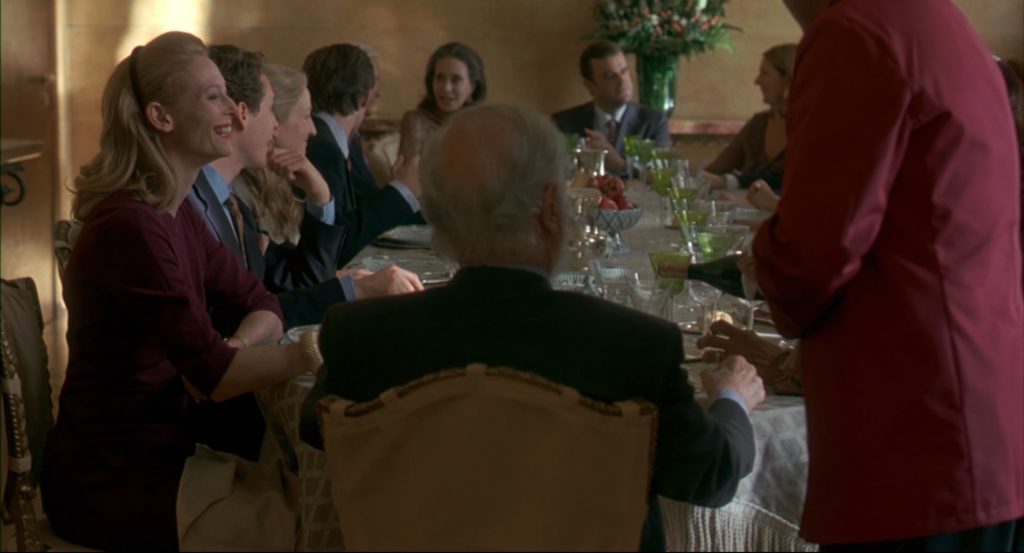
Let’s talk about the role of a guest at a dinner party. I think we have all heard that rule we should stay away from politics and religion so try to come prepared with some funny stories or a piece of celebrity gossip. If you are more introverted, maybe start by asking the person next to you if they traveled anywhere fun this year or have any trips planned for the holidays. People love to talk about travel. You could ask if anyone has seen a new art exhibit or you could mention one that you just saw and loved.
I personally think the best guests are those who make sure everyone is included in conversations. The old rule of speaking to the person on your right and then switching for the next course is not done much in the US so you always want to make sure that no one is left without someone to converse with during the evening.
I was once seated at a formal dinner on a beauty press trip and one of the guests completely monopolized the scientist for the brand who was seated between us. I can’t remember the exact specifics but I might have been on the end of one table so I was left with no one to talk to during dinner. It was so bad that one of the women from the press department had me switch tables and sit next to her.
Of course, I have to talk about the cell phone too. As an influencer, I’m invited to brand dinners and expected to post about the event. I take photos very quickly and put my phone away. I never post on Instagram while I’m out and always wait until I’m home. If you are invited to a dinner party and the table looks beautiful, by all means take a photo but then put your phone away. Give your attention to the people around you. One of my PR friends told me about a press trip in Italy that she helped organize for a men’s division of a famous shoe brand. She said one influencer was on his phone during the entire dinner and didn’t talk to anyone. She said she’d never invite him to another event ever again.
The concept of self-awareness has come up a lot recently. Have the self-awareness to think about the others around you and not just yourself. Manners and etiquette are a lot about making others feel comfortable and at ease.
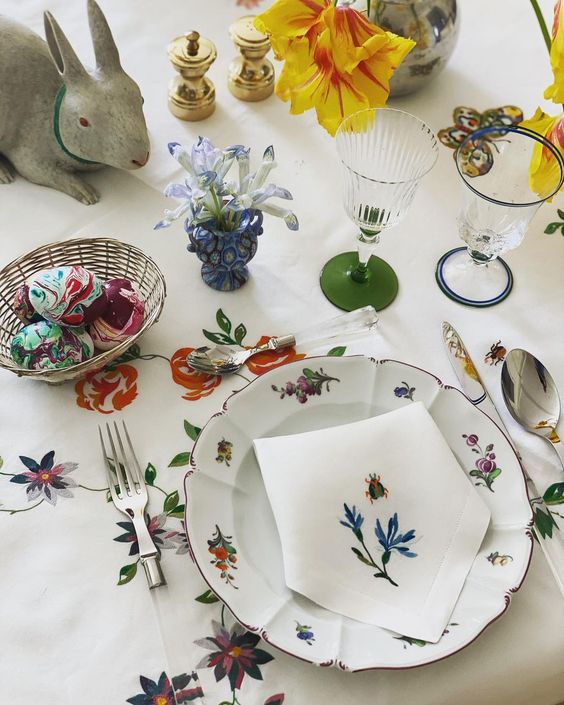
A questions that is often asked is whether you bring a hostess gift with you or send something after. I consulted Zoe de Givenchy for her advice.
“If visiting a good friend, I might have a small gift for them I had found somewhere that I had been meaning to give them. Otherwise, I would send flowers, exquisite chocolates, or a gift the next day with a handwritten note. That way, one has had the chance to see the hostess’ style and home and know what she’d appreciate. It’s quite an imposition to bring wine and expect your host to open it. Or flowers that she has to fuss with. My mother used to say that bringing wine to a dinner implies you don’t think your host’s wine might be good enough. But there’s a time and place for all things – as always much depends on where you are, and what matters is you’re being thoughtful and gracious.“
– Zoe de Givenchy
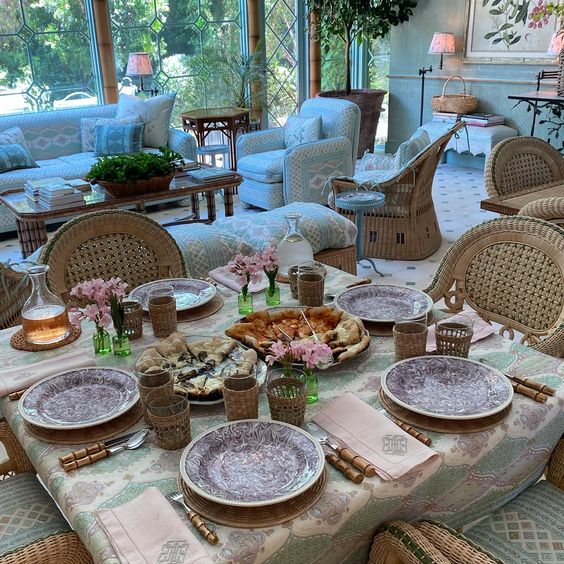
Setting a nice table doesn’t even have to be just for guests. Laura Slatkin set a beautiful table for pizza night. A lot of people say they use their nice china when they order Chinese food too. Setting a table at home is a good way to start training your children on table manners and how to eat properly.
For this type of family style meal, you may hold a dish for the person next to you so they can serve themselves or you could offer to put something from the dish you are holding on their plate.
I think it’s fine to have a casserole dish on the table with a trivet under it but I would transfer anything from a pan used on the stove onto a platter or into a dish. Two of my friends send me screenshots when they see a certain person on Instagram place skillets directly on their wooden table at dinner. Anything hot might ruin the wood which is why you will want to use a tablecloth with table protector underneath when you plan to set hot dishes on a table.
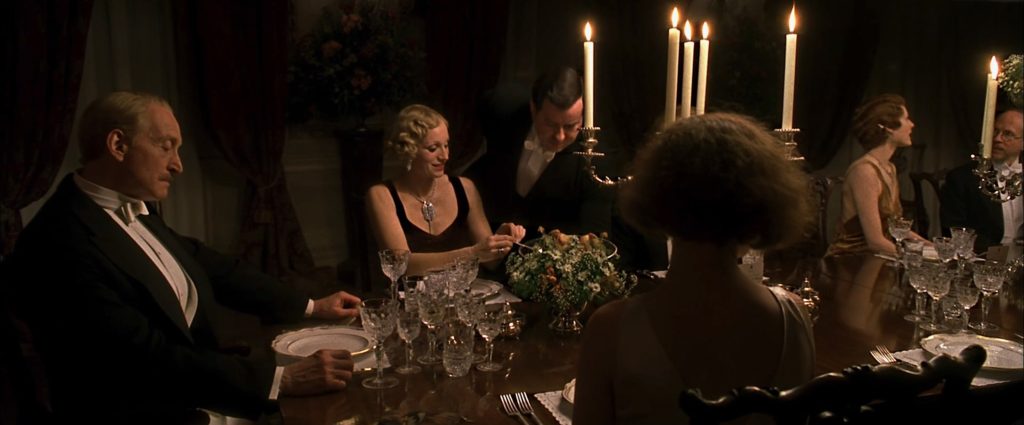
You may encounter dinner parties where food is brought to the table already on the plate which is also the usual custom in restaurants or you may be required to serve yourself from a tray, dish, or sauce bowl held by server.
You will be served from your left side. Take the serving fork in your left hand and the serving spoon in your right hand and serve yourself a reasonable portion. Don’t take too much and leave nothing for others or too little that your host might be offended. After you have served yourself, place the serving spoon and fork back on the platter as you found them. Side dishes will usually follow a meat or fish so add them to your same dinner plate.

I’ve only experienced serving myself like this a few times and it does provoke anxiety that I will drop or spill something. If you’ve never had to do this, just watch your neighbor to see what they do when serving themselves. Usually, the guest of honor is served first, if there is one, and guests to the right until the host or hostess is served last. It is customary to wait for everyone is served before beginning but a host or hostess might tell guests to begin without waiting so a hot dish doesn’t get cold.
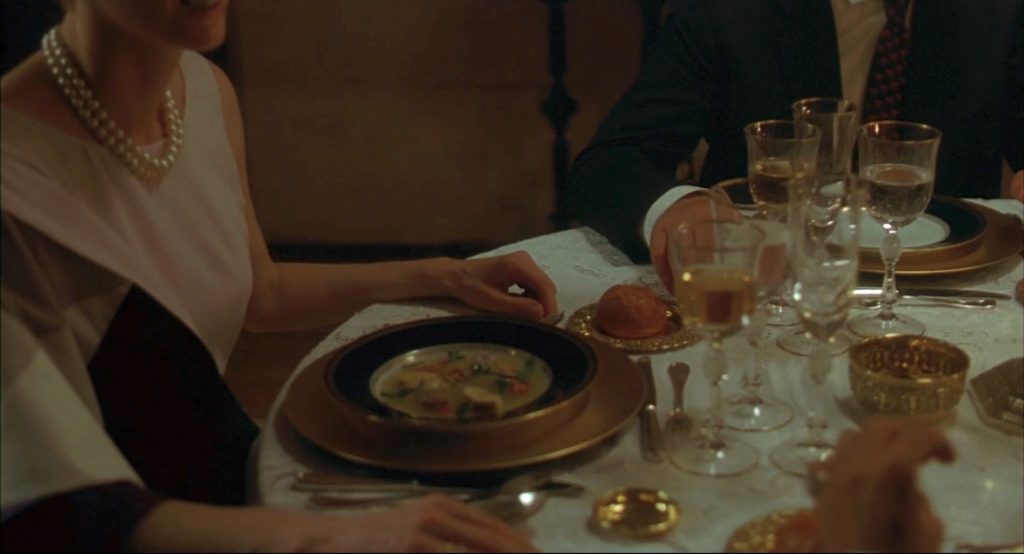
The soup course which is often served first can be tricky. The soup spoon is always the larger spoon laid on the outside of the knives if it is the first course. You should spoon the soup away from you. There is a little saying to remember this, “like ships that go out to sea, I spoon my soup away from me.”
If you need to pause while eating soup, you may leave the spoon in the bowl. If there is just a little soup left, you may tip the bowl away from you to spoon the remainder.
There is some debate on where to leave the spoon when you are finished. In the scene above, the soup bowls were brought out alone and placed on the charger already on the table. If it’s unclear if the charger will stay for the entire meal, it’s acceptable to leave your spoon in the bowl when you are finished eating. I’ll get to the proper placement of flatware below.
If the soup has come to the table with a plate underneath it, you may leave the soup spoon in the bowl or on the plate underneath that will be removed with the soup bowl.
If you are eating soup in a cup, you should leave the spoon on the plate underneath when you are finished.
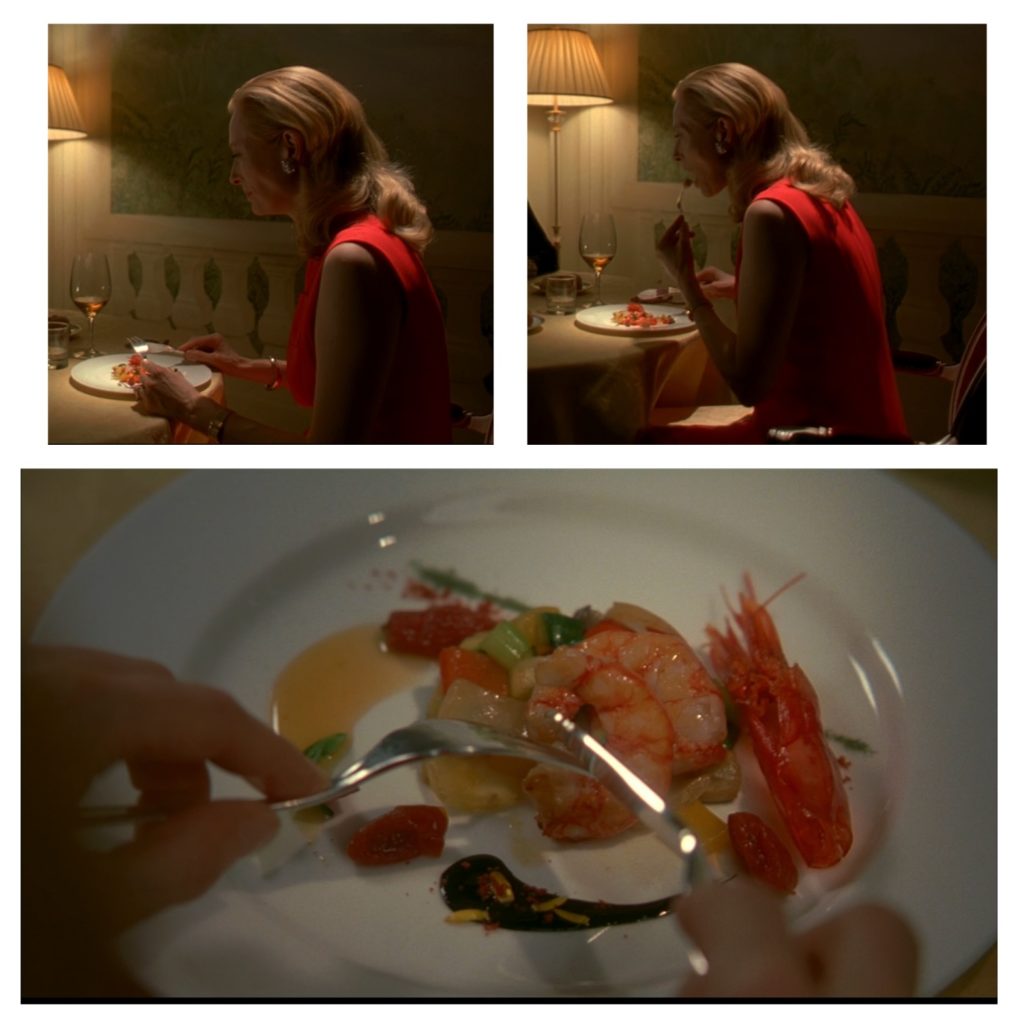
One of the reasons I have a problem with so many films and television shows about wealthy or refined people is that they get so many details wrong. Some like Downton Abbey have etiquette experts for period dramas but table manners for contemporary life often get flubbed but if you know your stuff, you will catch them.
In this scene in I Am Love, she is eating a shrimp appetizer with a fish knife held in the manner you would hold a regular knife. She probably should have been using an appetizer knife since shrimp are tough to cut.
A fish knife is used to gently flake fish to be eaten with the fork. It’s also held in the manner you would hold a fork you are using to eat with your right hand. It is not held like a cutting knife.
But while we are here, let’s pretend she has the proper knife so we can discuss eating styles. In the US, Americans cut a piece of food and then put the knife down on the side of the plate and transfer the fork to their right hand to eat what they cut while keeping their left hand in their lap. It’s a bit exhausting going back and forth.
Continental style refers to the Continent of Europe and is how you should eat when you travel abroad. When you eat Continental Style you always keep the knife in your right hand and the fork in your left with your index fingers extended. It takes a little practice to figure out how to push the food onto the back of the fork but once you get it, it’s so much earlier than switching back and forth during the entire meal. When you bring the food up to your mouth, it is perfectly acceptable to lean over a little. The tines of the fork should stay down and you should never point your knife at anyone or gesticulate with it while eating.
When you eat Continental Style, you keep your forearms on the table. The French are very big on forearms on the table. This harkens back to a time when you may have been eating with enemies and you wanted to see their hands at all times so you knew they weren’t going to pull a knife on you during a meal and vice versa.
One of my Instagram followers also told me the following, “I went to a French girls boarding school and I was told you always put your wrist(s) on the table while eating so your shoulders are balanced and not sloped down.”
I grew up eating American style but quickly learned after traveling to Europe that I should be eating as the Europeans do and taught myself to eat Continental Style. Young children who are too young to use a knife, learn to eat this way with a food pusher. This story has some great photos on how to hold the utensils for Continental Style eating.
Also, just a reminder that you cut one piece of meat at a time for yourself to eat but you may cut up everything into small pieces for a small child. When you eat Continental Style you may push some mashed potatoes or vegetables onto the back of the fork with the piece of meat you are about to eat as well.
You also take one small piece off the roll or piece of bread. You butter it as you eat it each little piece. You do not butter an entire piece of bread or roll unless it’s breakfast toast. It’s acceptable to place bread directly on the table in France if there is no bread plate. If you do not have an individual butter dish by your place setting, you take a little butter out of the dish for the table and place it on the side of your bread plate. You do not butter your roll or bread directly from the butter for the table.
There is also a bit of controversy about salad and whether you fold up the lettuce leaves and only eat them with a fork or if you can cut them. Some say you should never cut lettuce. I can go either way on this one.
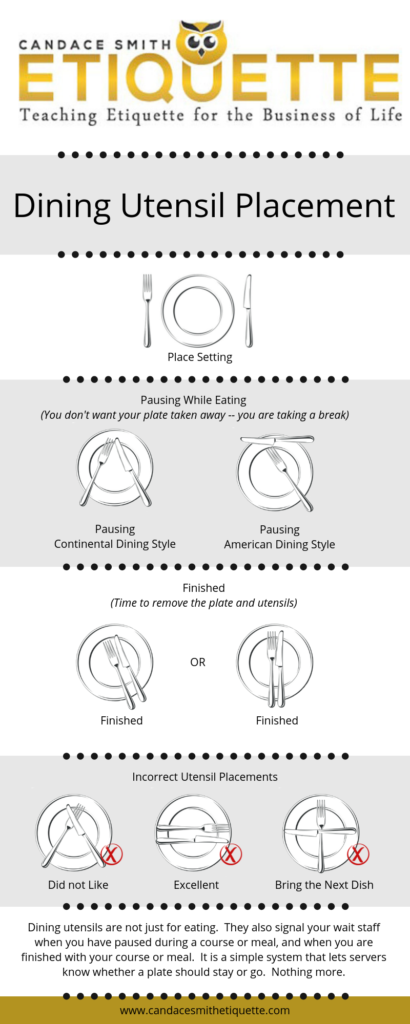
One of my biggest pet peeves are non-verbal cues that you use during a meal with your utensils. Not only do a lot of people not know these rules, many restaurants are not properly training their staff. I’ve had waiters ask if they could take a completely empty plate and others try to clear while people at the table were still eating.
I found this chart by Candace Smith and it’s extremely helpful to know the correct placement of the utensils for pausing and to indicate you are finished eating.
You should leave your utensils in the pause position when you take a drink. You should never hold a utensil and a glass at the same time. You should also pause when you need to wipe your mouth.
I have always been taught to leave utensils in the first position at the end of a meal. I’ve never seen anyone leave them straight up and down but it does seem to be used in England. Never leave your utensils in any of the last three positions.
In the US, we leave the fork prongs facing upward while in France and other places, they may leave them with the fork prongs facing down when we signal we are finished.
At the end of every dinner party, brand event, or restaurant meal, I always look around to see how many people know how to signal they are finished. Sometimes it’s half and half.
I do understand that much of this is confusing, especially because different countries have different etiquette. I haven’t even mentioned Asia which is even different. If you are traveling a lot for work or pleasure, I would research the etiquette in the countries you plan to visit.
Also, don’t be afraid to ask. I consult my French friends all the time about local customs. You might even charm a grand dame by politely saying you were raised in America and are worried about making a faux pause and could she give you some pointers. People love to give advice.
Where I get annoyed is when people write to other people on Instagram and scream at them they have done something wrong. You could politely say instead, “hey, I noticed that you have the knife edges facing out on your table. It’s better for safety if they face the plate.”
Truly well mannered people do not point out the bad manners of other people but again, your bad manners might not get you invited back.
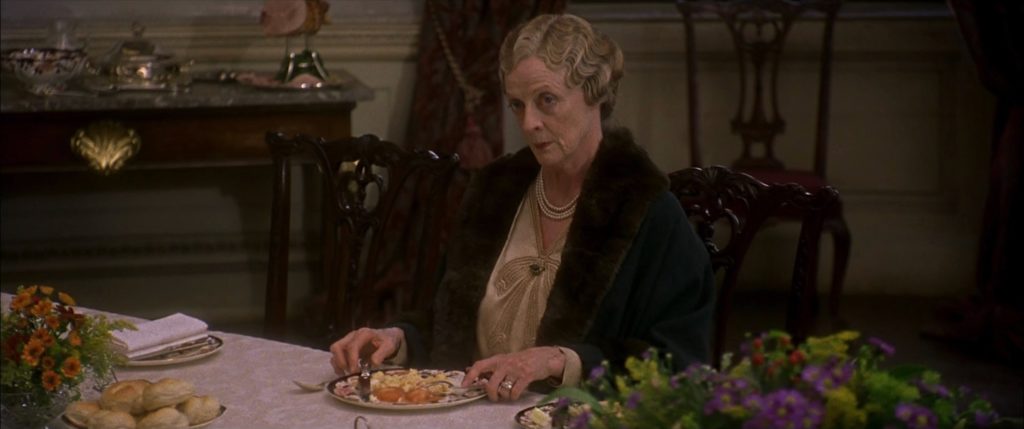
If you’ve never seen Gosford Park, you are in for a treat. It really is one of my favorite films with lots of upstairs downstairs drama. It was written by Julien Fellowes and I consider it his best work. Here is Dame Maggie Smith as Constance, Dowager Countess of Trentham who had paused eating and is about to pick up the silver again. She would go on to become, Violet Crawley, Dowager Countess of Grantham in Downton Abbey.
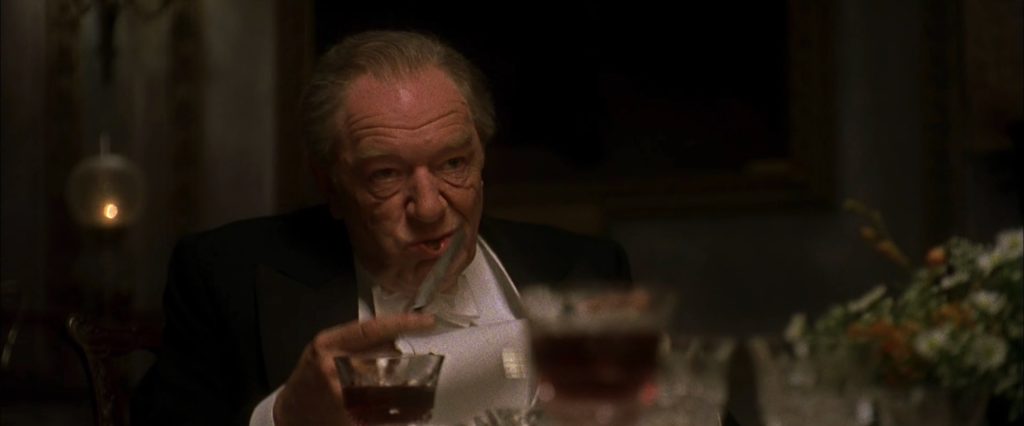
If you find yourself with a bone in your mouth or something that needs to come out, it’s advised to use your fork to remove it which is one maneuver I have not mastered. You are allowed to also discreetly remove it from your mouth with your fingers and set it on the side of your plate. Never spit it into your napkin. And again, never point your knife at anyone or put too much food in your mouth or talk with your mouth full like in this scene in Gosford Park.
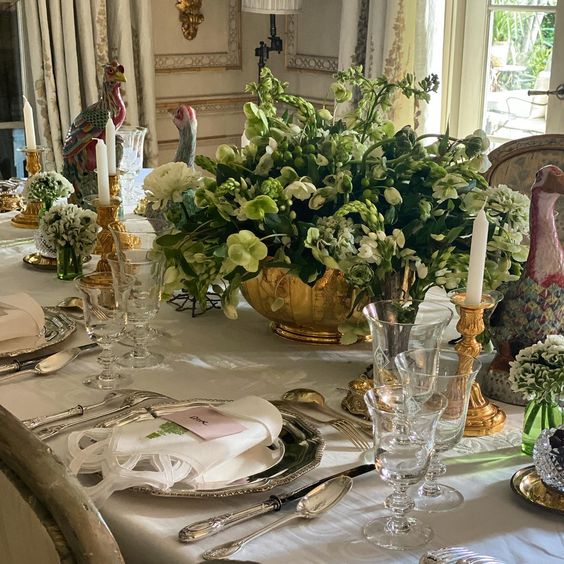
You may have noticed in some photos that the flatware in turned over. The French, and Laura Slatkin, have a custom of setting the table with fork tines down. I was told it began when men wore frilly lace cuffs that would get caught in the fork tines which is why they began to turn them over. This was confirmed by a table setting video I can no longer find. This is why you see French silver and silver-plate flatware with crests on the back instead of the front.
The fork itself has such a fascinating history that there is an entire book devoted to the subject, Consider the Fork: A History of How We Cook and Eat. Before the fork was adapted from two-prongs used to spear meat, people ate with their hands, knives, spoons, and a stale pieces of bread. It’s said the Italians created the table fork because it was impossible to eat spaghetti with any of these other items and it was Catherine de Medici who brought it to France.
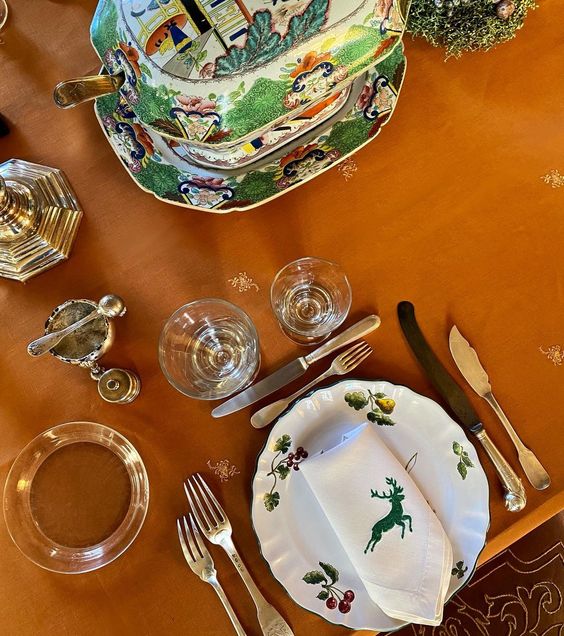
It is acceptable to eat asparagus with your fingers but it often arrives covered in a sauce so it then it is eaten with a knife and fork.
One item you might encounter that will be completely foreign in a finger bowl. It usually arrives after a course that can be eaten with your fingers like asparagus or fried chicken. I was invited to a home for lunch in Louisville, Kentucky and even though we didn’t eat anything with our fingers, a finger bowl arrived on a plate in front of me. I was pretty sure it was a test to see if the Yankee knew what to do. Luckily, I did. If you find one placed before you, it will most likely be lemon water in a shallow bowl and will come with its own napkin. You dip the tips of your fingers in the bowl and gently pat them dry on the new napkin which you will set aside to the left of your plate. Do not use the napkin in your lap unless they forget to bring you one with the finger bowl. It could also arrive at the end of the meal. If it’s not removed after you use it, you can place it to the upper left of your place setting.
You might also find an individual salt cellar and spoon at your place setting. It may be accompanied by a matching cellar for the pepper or a tiny pepper mill. These are fun things to collect and you can find wonderful silver, silver-plate flatware, china, glassware, embroidered table linens and more at flea markets and brocantes in Europe.
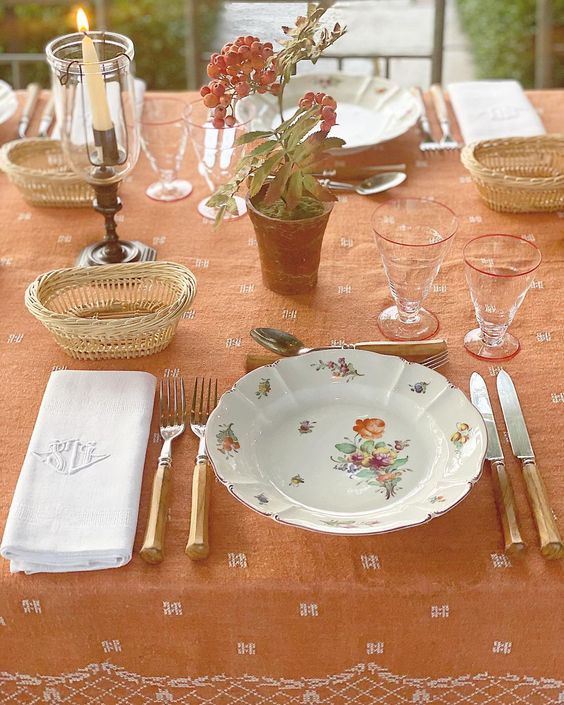
After the main course there might be a cheese course or dessert. Dessert might be eaten at the dining table or you may retire to another room for coffee and dessert. Cake is usually just served with a fork since you can easily eat cake without a knife. Dessert utensils are also left in the same resting and finished positions.
While Americans have been taught to keep their elbows off the table, you might see people in France and other parts of the world with their elbows on the table during dessert while people are lingering at the table and talking. Women might do it in a flirtatious manner but I would refrain from touching or twirling your hair while at any dining table. You’d be surprised how many people do this during a meal.
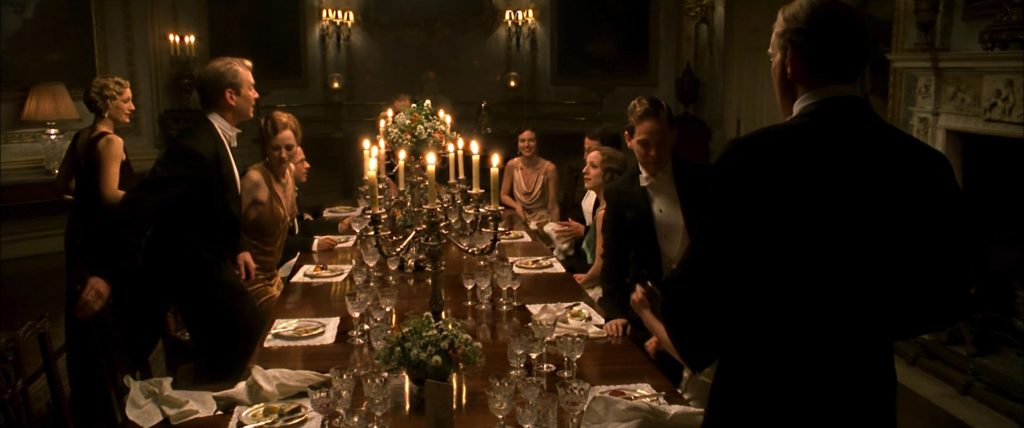
If you must excuse yourself from the table for any reason, you leave your napkin on your chair. You may come back to find it neatly folded beside your place setting at some restaurants.
At the end of the meal, you wait for the host or hostess to get up first and place her napkin to the left of her place setting before you do the same. You do not refold the napkin, you just take it off your lap and place it gently beside your place setting to the left. If it’s soiled, you can try to hide the food stains by folding it slightly. You never throw your napkin down in a flourish.
You should also push in your chair. You would be surprised how many people don’t do this and then you end up having to move their chair to get out of a restaurant.
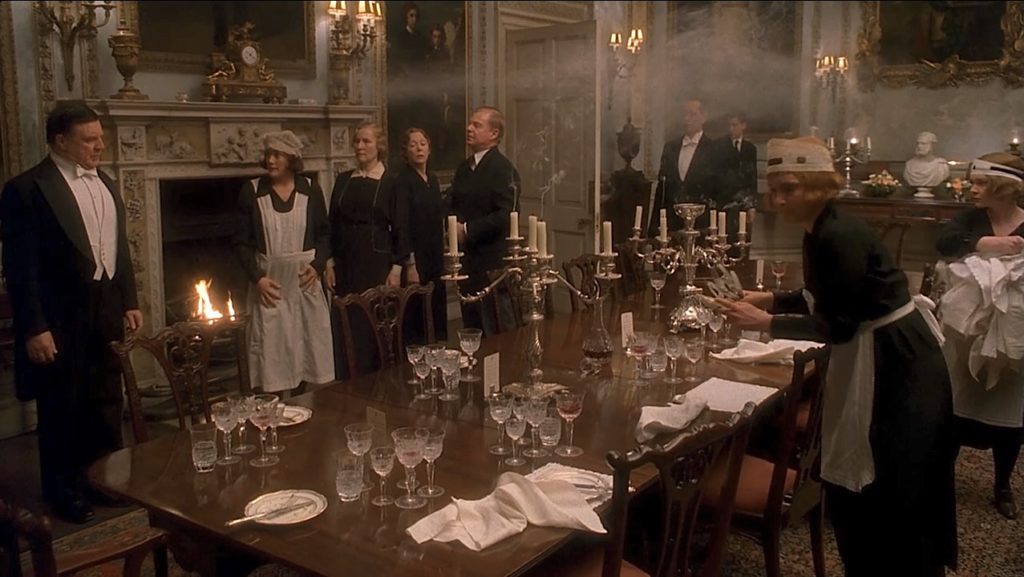
Candles are not extinguished until everyone has left the table.
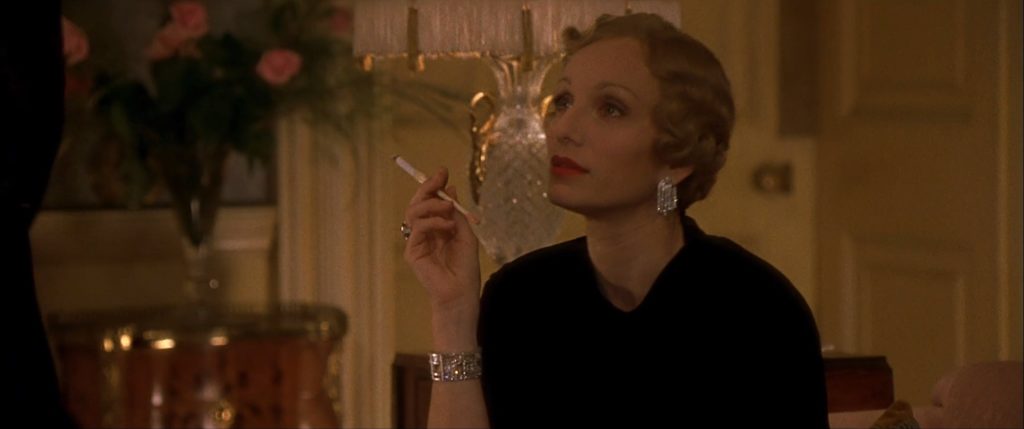
You should take a cue as to when you leave from your host or hostess. Perhaps they suggest coffee and after dinner drinks in the drawing room. Or if you’re in Europe, it might be time for a cigarette on the terrace. I think it’s nice to not be the first or the last to leave.
I’ll leave you with this bit of advice from Tiffany’s Table Manners for Teenagers.
“So now that you know the rules you can start breaking them. Don’t forget, though, it takes a lot of social know-how to break rules.
Remember that a dinner party is not a funeral nor has the hostess invited you because she thinks you are in dire need of food. You’re there to be entertaining. Be gay. Do your part. Don’t be gloom.”
– Walter Hoving
And don’t forget to send a thank you note so you are invited back!

